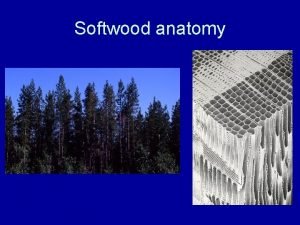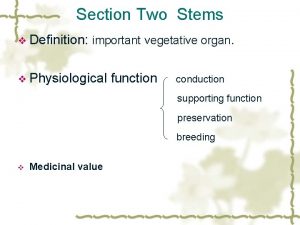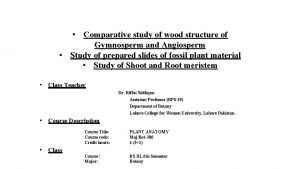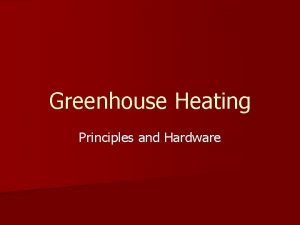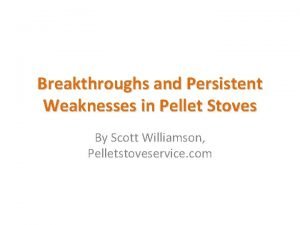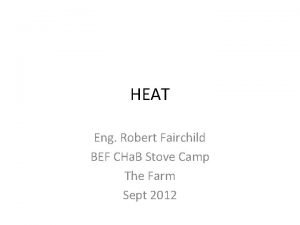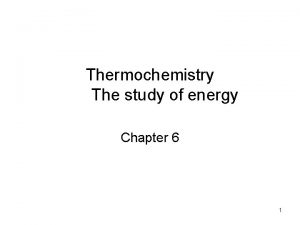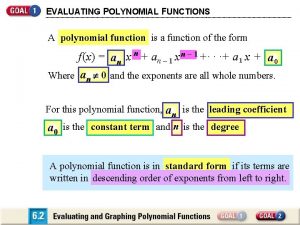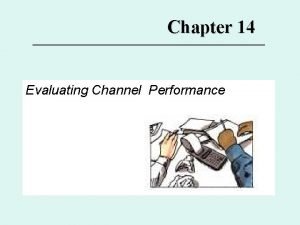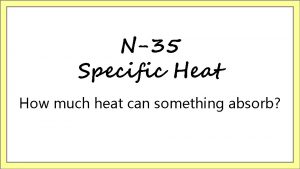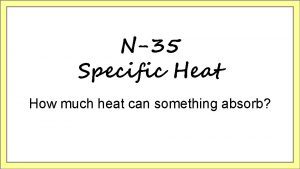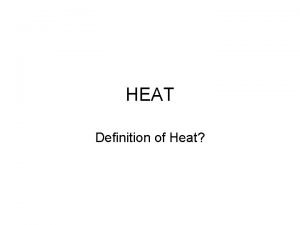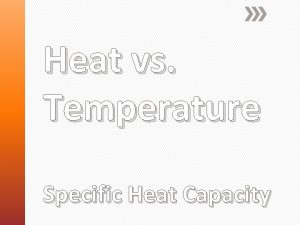How much wood U W Q Evaluating heat





















- Slides: 21

How much wood… ? U -W Q

Evaluating heat engines with PV diagrams

Process Meaning Isobaric P=0 Isovolumetric V=0 Isothermal T=0 Adiabatic Q=0 Implications Example

Process Implications Example In English Isobaric To expand (contract) a gas at constant pressure, heat must be added (taken away). Isovolumetric Adding (subtracting) heat to a gas at constant volume increases (decreases) pressure. Isothermal When energy is added to a gas at constant temperature, the gas will expand its pressure will drop. Adiabatic Doing work on a gas decreases its volume, and increases its pressure and temperature.

How much work is done to gas? How much does internal energy change? How much heat is added? Conventions: W+ = work done TO gas by environment • i. e. , gas is compressed, final volume is smaller W- = work done BY gas on environment • i. e. , gas expands, final volume is larger Q+ = heat flows INTO gas Q- = heat flows FROM gas

Isobaric process: work Final Initial

Isobaric process: change in internal energy Final Initial

Isobaric process: heat Final Initial Take-away: Isobaric processes do work on the environment, but require that heat be added.

Isovolumetric process: work Final Initial

Isovolumetric process: change in internal energy Final Initial

Isovolumetric process: heat Final Initial Take-away: Isovolumetric processes do no work on the environment; additional pressure requires heat be added to the system.

Isothermal process: change in internal energy Final Initial

Isothermal process: work and heat Initial Final Take-away: Heat added to isothermal process does work on environment with no change in temperature.

The process makes a difference! Initial Final

Rank processes from those that do most work to those that do least work. Initial C D A B Final

Efficiency

Example An automobile engine has an efficiency of 20% and produces an average of 23, 000 J of mechanical work per second. b) How much heat input is required?

Example An automobile engine has an efficiency of 20% and produces an average of 23, 000 J of mechanical work per second. a) How much energy is discharged as waste heat?

Ideal efficiency Note: this equation is sometimes called Carnot efficiency in honor of its discoverer, a French physicist Sadi Carnot.

Coefficient of performance

Why heat pumps? a) How much thermal energy is delivered by 1500 -W electric heater? b) How much thermal energy is delivered by 1500 -W heat pump with a COP of 3. 0?
 Longitudinal tracheids
Longitudinal tracheids Wood wood teenager
Wood wood teenager Early and late wood difference
Early and late wood difference Angiosperm wood vs gymnosperm wood
Angiosperm wood vs gymnosperm wood Wood sawed wood old tongue twister
Wood sawed wood old tongue twister Tooter tongue twister
Tooter tongue twister True or false katniss dismisses haymitch advice
True or false katniss dismisses haymitch advice How much is too much plagiarism
How much is too much plagiarism Decaffeinated hot chocolate
Decaffeinated hot chocolate Wood boiler heat exchanger with fan
Wood boiler heat exchanger with fan Aladdin pellet stove
Aladdin pellet stove Viessmann heat exchanger
Viessmann heat exchanger Heat transfer holman
Heat transfer holman How much heat is given off when an 869 g iron bar cools
How much heat is given off when an 869 g iron bar cools Spcific heat of water
Spcific heat of water Dry heat method definition
Dry heat method definition Latent heat formula
Latent heat formula Evaluating polynomial functions
Evaluating polynomial functions Huff's law of shopper attraction
Huff's law of shopper attraction Performance evaluation of channel members
Performance evaluation of channel members Advantages of secondary data
Advantages of secondary data Evaluating selection techniques and decisions
Evaluating selection techniques and decisions
